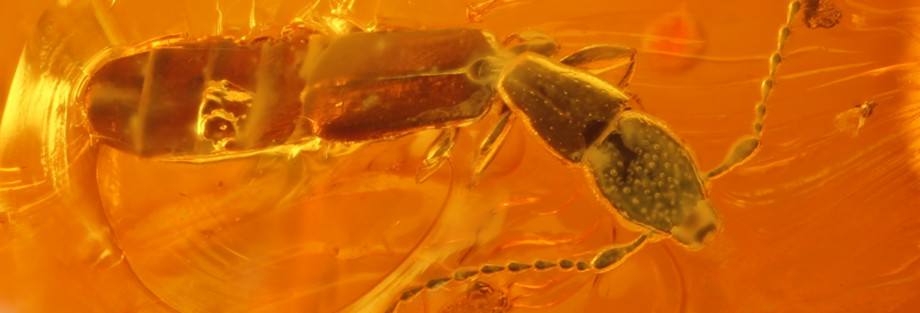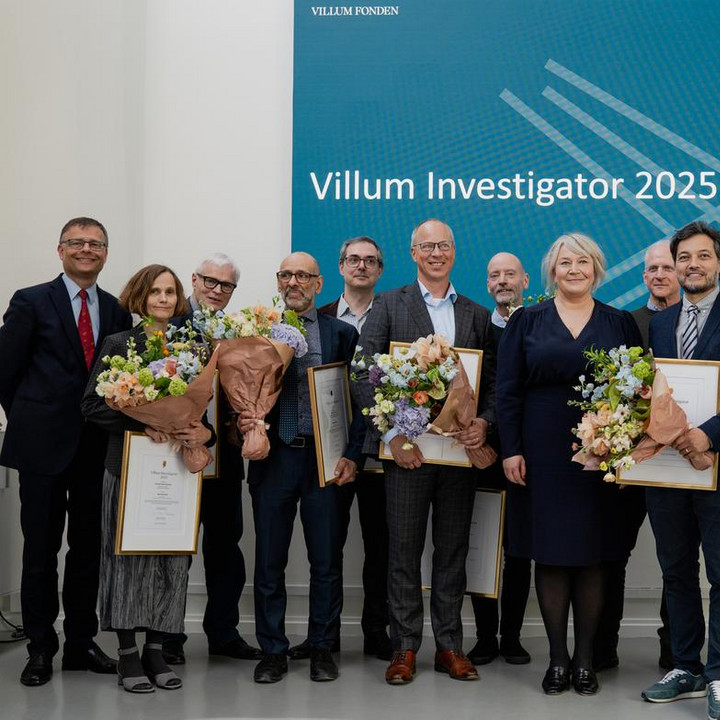Meet Diagrypnodes villumi - a small beetle of great scientific value

37 million years ago the Earth looked a little different than it does today. Although the continents were located in more or less the same way as today, Europe as we know it was warmer with very different flora and fauna. We know this, in part, because of fossils that preserve organisms from this time period.
Fossils are remarkable snapshots of time and a window to the past.
Amber can preserve millions of years old organisms such as insects and plants as fossils in exquisite detail as 3-dimensional ‘mummies’ that researchers can study in much the same way they study living creatures.
Amber in Europe is abundant in several places (e.g. Gdansk Bay or the coastlines of Denmark). It is popular for making jewelry, but its main value is most certainly scientific. During the Late Eocene several different ‘amber forests’ grew at the same time. These were the more northern Baltic amber forest from which amber found along the coasts of Denmark is derived, and the more southern Rovno amber from Ukraine. These two amber deposits are interesting because the amber forests grew at the same time. So studying and comparing the fauna between them can tell researchers a lot about the environment at that time, how the climate was and it may even tell the researchers how insects and other organisms will respond to current climate changes.
In a piece of Rovno amber currently housed in the collection at the Natural History Museum of Denmark, researchers discovered an extinct species of a genus called Diagrypnodes. There are three living species of Diagrypnodes that can be found in Australia, New Caledonia and New Zealand.
Before the discovery of the fossil, the most natural explanation for this distribution on land masses separated by oceans would be due to the break up of continents that once formed Gondwanaland in the southern hemisphere. Australia, New Caledonia and New Zealand separated from each other about 80 million years ago. Diagrypnodes villumi that existed in the Eocene of what is now Europe (about 37 million years ago) shows us that this probably was not the case. During the Eocene, Diagrypnodes were more widespread. The species is unknown from the more northern Baltic amber forest, probably because the winters in Northern Ukraine were warmer than in Russoscandia. Diagrypnodes villumi in Rovno amber became extinct as well as the amber forests it lived in as the Earth changed from a Greenhouse climate (lack of continental ice sheets) to Icehouse climate (presence of polar ice caps and continental ice sheets), and the distribution of Diagrypnodes became more restricted. Diagrypnodes villumi went extinct and is now preserved as a fossil.
The discovery and description of Diagrypnodes villumi is a small but important contribution to our understanding of the Eocene insect fauna.
“These rather small discoveries contribute to our understanding of how the Rovno and Baltic amber forests looked, how the animals responded to historical climate change and will hopefully help us narrow down the age and time period in which they grew.
We are pleased to dedicate this new species of beetle to Villum Fonden in recognition of their support for the study of the Eocene insects,” Joshua Max Jenkins Shaw, the Natural History Museum of Denmark.
For more information read the full research article here.
Photo: Joshua Max Jenkins Shaw



